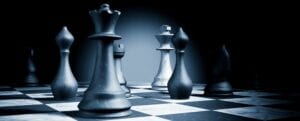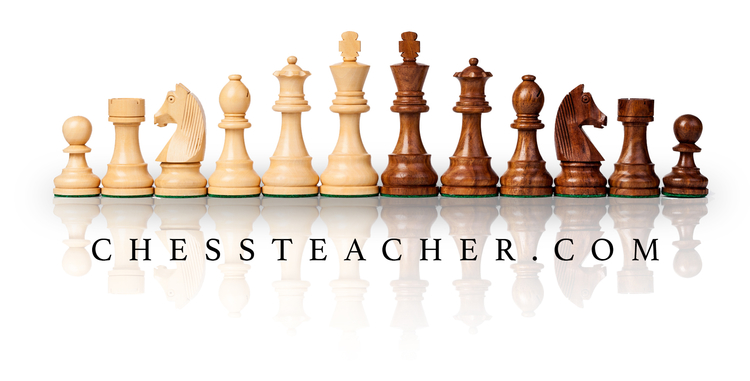Piece Value, Material Advantage, and End Game Success
 Most chess players understand that some pieces are worth more than others. However, advanced players understand the numeric value of all the pieces and how to use this information to their advantage during all stages of the game and in different circumstances.
Most chess players understand that some pieces are worth more than others. However, advanced players understand the numeric value of all the pieces and how to use this information to their advantage during all stages of the game and in different circumstances.
The guide below will help you learn how to properly utilize your pieces to maximize your board value and enhance your strategic possibilities. Online chess lessons will help you clarify this strategy.
Gauging Chess Piece Numeric Value
Chess piece numeric values vary based on a variety of factors. These factors can include the movement potential of a piece, how much area they control, and their attack possibilities. The values below provide you with a guide into understanding this aspect of your game:
- Pawn – One point
- Knight – Three points
- Bishop – Three points
- Rook – Five points
- Queen – Nine points
- King – Invaluable
If you go strictly by the numbers, swapping knights and bishops is always a good idea as is destroying lower value pieces. However, the numeric value of a piece doesn’t indicate its strategic importance in a specific game and doesn’t let you know how to utilize them to your success.
Leveraging Material Advantage to Success
Now that you understand the relative value of your chess pieces, you also need to know how to use this information to your advantage. Too many chess players focus on eliminating high-value pieces without the knowledge of how to use those pieces properly in a strategic situation. Take these strategies into mind while playing a game:
- Understand that piece value is relative – The value of a piece will change depending on a strategic position, such as how knights are worth more at the beginning of a game because they can move through more congested areas of the board more quickly than bishops or rooks.
- Sacrifice pawns for pieces – Early in a typical chess game, you should sacrifice pawns for pieces. For example, let your opponent take a pawn if you can then take a piece like a bishop or a knight. Especially if this swap opens up more of the board for your pieces.
- Swap pieces if it makes strategic sense – Swapping like pieces — a bishop for a bishop — is often a good choice when your opponent loses a strategic advantage. For example, if you can trade white-space bishops when your opponent has more open white spaces, you eliminate their position.
- Sacrifice pieces for pawns – At the end of a chess game, pawn value skyrockets because you can advance them to queens. Feel free to sacrifice a higher-value piece for a pawn if you can promote it. Don’t get too attached to your pieces, as pawn advancement often trumps everything else.
- Break apart piece defenses properly – In many situations, a sacrificed piece can break apart an opponent’s defenses in subtle but important ways. For example, you may sacrifice a knight to destroy the back defense of a pawn structure, which could cause this defensive barrier to collapse.
Take these crucial strategies into mind whenever you need to gauge the value of your pieces and when to use them properly. Whenever possible, try to avoid losing your highest value pieces, but pay attention to moments when such a loss will benefit you.
Maximizing Material Advantage Success
As you can see, the piece value is critical to understand for your chess success. So if you want to learn more about these strategies or others like them, please don’t hesitate to contact us at Chess Teacher today to learn more. We can set up online chess lessons that will provide you with the help that you need to become a successful and more skilled chess player.
